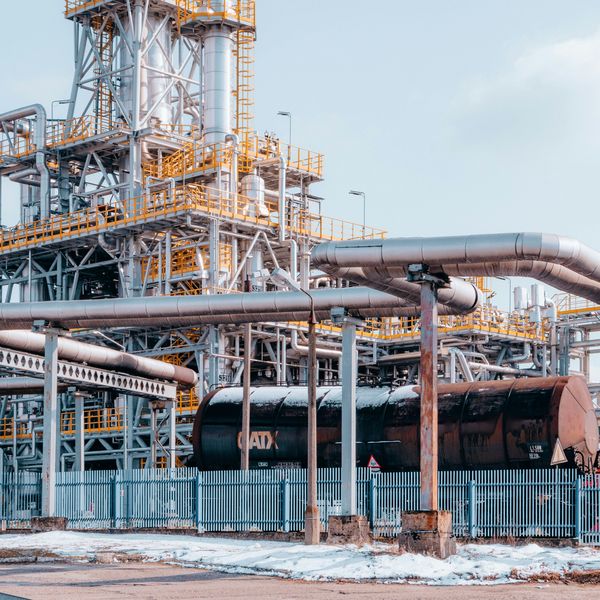Pakistan government bonds — recent past, present and future
Nukta takes a cursory look at the cut-off yields of key government papers from the start of 2024

Haris Zamir
Business Editor
Experience of almost 33 years where started the journey of financial journalism from Business Recorder in 1992. From 2006 onwards attached with Television Media worked at Sun Tv, Dawn Tv, Geo Tv and Dunya Tv. During the period also worked as a stringer for Bloomberg for seven years and Dow Jones for five years. Also wrote articles for several highly acclaimed periodicals like the Newsline, Pakistan Gulf Economist and Money Matters (The News publications)

Pakistan government bonds declined steeply due to easing inflation
Shutterstock
Down, down, and down. That has been the trajectory of Pakistan government bonds during the last eight months of 2024.
They declined steeply due to easing inflation, which allowed the country's central bank to kickstart an easing monetary cycle after four years.
Nukta took a cursory look at the cut-off yields of key government papers from the start of 2024, where short-term bonds and six-month KIBOR (Karachi Interbank Offered Rate) were scaling up beyond the 20% mark, while long-term bonds — commonly known as Pakistan Investment Bonds — were quoted between 14% to 16.73%.
When the year started, the benchmark interest rate was maintained at a record 22% because of higher inflation. Fear of rupee depreciation because of the gigantic mountain of debt repayments muffled any hoped for any monetary easing.
However, as inflation started easing, the central bank got sufficient room to cut interest rates. For instance, the inflation rate in January was at 28.3%. However, indicators hinted that with global commodities prices on downhill course, the rate would begin to ease off.
In its monetary policy announcement in January, the State Bank of Pakistan (SBP) assessed that inflation in 2025 was likely to be in single digits, ranging between 5% to 7%. The bank's key thrust was continuous fiscal consolidation and steady external flows as it would help combat inflation and keep the domestic currency stable.
The currency stability has been on top of the agenda of all economic managers, with imports kept under strict radar of the central bank. Meanwhile, thanks to cooling of global commodities prices, inflation rates' reins have been held in a firm grip because of the high base effect.
While the inflation rate remained high during the first four months of 2024, a tight monetary stance, stable currency, steady inflows, completion of the International Monetary Fund (IMF) program and growth in remittances started to show results, with inflation rates cooling down.
In January, the real interest rate was -6.3% whereas by April it was+4.7%. This helped the central bank to revisit the monetary policy stance. In June, the much-awaited decision finally arrived, with the SBP slashing the interest rate by 150 basis points (bps) after keeping it at the record level of 22% for a year.
However, bonds and treasury bills dealers had already anticipated the rate cut and started participating and buying long-term bonds and treasury bills. Since January to date, three-month bills are down by 831 bps, six-month by 851 bps, one-year by 808 bps, three-year Pakistan Investment Bonds by 493 bps, five-year by 356 bps, 10-years by 221 bps while six months KIBOR by 814 bps.
Who's been the biggest beneficiary?
The interest rate cut's biggest beneficiary is the government — the biggest borrower of treasury bills and Pakistan Investment Bonds.
This time, the government took the most daring decision following the drop in interest rate and adopted tools to buy back treasury bills. In three outings from September, buyback of treasury bills from banks amounted to PKR 1,026 billion where rate at this window declined from 16% from the first buyback to 15.09% .This might result in savings to government amounting to nearly PKR 31 billion.
The buyback was figured out on falling interest rates with enough liquidity at the State Bank and maturity of treasury bills worth PKR 4,700 billion next month.
- YouTubeyoutu.be
SBP data shows the government's domestic debt as of August was around PKR 48,339 billion, of which nearly PKR 28,391 billion was parked in PIBs. So any cut of 100 bps meant that the government would get a benefit of PKR 280 billion on conservative basis.
On the other hand, due to higher interest rate regime, the SBP recorded a profit of PKR 2,700 billion against PKR 972 billion a year ago.
Effect on industrial cycle
Despite the cut in benchmark interest rate, the industrial cycle is not picking up.
Private sector borrowing in October totalled around PKR 447 billion compared with net retirement of PKR 157 billion of the same period a year ago. During July to September, there has been net retirement from the private sector which shows that the economy is reeling. This is because the sector's ability to purchase was affected by the long period of high inflation leading to a decline in sales.
Pakistan's large scale manufacturing index contracted by 2.65% in August compared to the same month last year. The index entered negative growth after positive growth of 2.4% in July. In FY24, the LSM witnessed negative trend of 0.03%.
Future outlook
The expectation for 2025 has been mostly glued to external developments such as the US Federal Reserve's decision about the interest rate, US election outcome, the policies of the new US president, the country's bilateral ties with China, ongoing tension in Middle East, and any escalation that could raise fuel prices.
The rise in crude oil price would raise inflation rates in import-driven countries such as Pakistan where spike will be higher than expectation, easing of monetary policy will be short-lived. If that happens, citizens of countries like Pakistan may see appreciation in interest rate by last quarter of 2025 or first quarter of 2026.










Comments
See what people are discussing